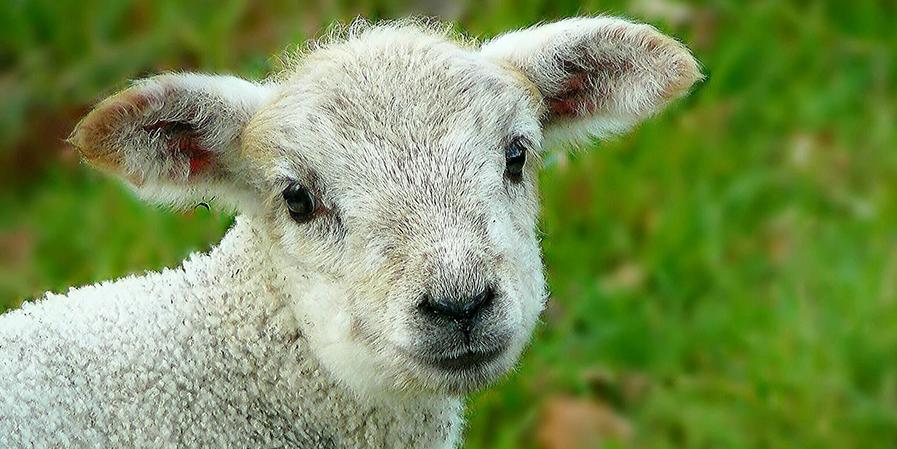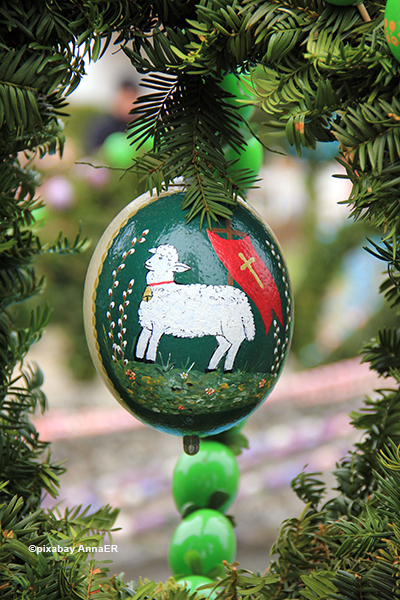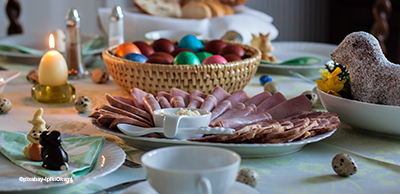
A couple weeks before Easter you may start noticing that German bakeries offer little lambs, made from biscuit, a cake very similar to the American pound cake. They are sold glazed or just dusted with confectioner’s sugar and often carry or wear a little flag.
 If you look at the Easter candy for sale, you will find little sheep and Easter lambs there too, in chocolate or sparkly red candy, the lambs are everywhere. You can even find them as Easter deco and on table cloths. But what is it with lambs on Easter? They don’t lay eggs or fill Easter baskets.
If you look at the Easter candy for sale, you will find little sheep and Easter lambs there too, in chocolate or sparkly red candy, the lambs are everywhere. You can even find them as Easter deco and on table cloths. But what is it with lambs on Easter? They don’t lay eggs or fill Easter baskets.
Well, the lamb has always had a deep connection with the catholic church, but even before that did the lamb symbolize innocence and fragileness. In the Old Testament, the lamb is described as sacrificial animal, like in the famous story of Abraham and Isaac. The bible also describes how Jesus himself is the innocent lamb that took all our sins and died for us to release us of our sins. In early Christianity the sacrificed lamb was placed right under the altar and blessed. It was then to be the first meal for the congregation on Easter, right after the time of fasting.
 The custom of eating lamb during Easter has disappeared to the most part, already during medieval times the preferred meat for Easter was pheasant and rabbit.
The custom of eating lamb during Easter has disappeared to the most part, already during medieval times the preferred meat for Easter was pheasant and rabbit.
Today the sweet Easter lamb cake has replaced the lamb meat dish during the Easter holidays. Traditionally the Easter lamb is prepared on Green Thursday, the day before Good Friday and everyone in the family gets to participate. The lamb was then placed in a basket of Easter goodies, bread and meat to be taken to church where it all got blessed. The baskets today contain mostly colored eggs, Easter candy and the Lamb. But to this day the Easter Lamb is part of a proper Easter breakfast.
This is for sure, one of the German traditions, that’s fun and yummy to take part of.
Enjoy!
